Are you a Quiet Speculation member?
If not, now is a perfect time to join up! Our powerful tools, breaking-news analysis, and exclusive Discord channel will make sure you stay up to date and ahead of the curve.
Welcome back. Our deep dive into mythics on MTGO continues! For these next two weeks, we will be focused on mythics with converted mana costs of four and five (hereafter referred to as "midsize" mythics). This article is especially important because a plurality of mythics are printed in this range. How will they differ from those mythics lower on the curve? Do we need to evaluate them differently? Are there any patterns we can discern that can help us make smart investment decisions moving forward? After all, Ixalan and Rivals of Ixalan have a whole bunch of cards in this category.
Compiling this data took a lot longer than the previous weeks' data because there are so many mythics in this category. Since Born of the Gods, a whopping 93 mythics with converted mana cost of four or five have been printed. Click the spoiler below to view the whole data chart.
(1) On average, cheap mythics perform better than midsize mythics.
Data is the perfect corrective to anecdote. While cheap duds like Undergrowth Champion and Drana, Liberator of Malakir stick in our minds, so too do the hallmark midsize mythics that tend to define and dominate Standard, cards like Gideon, Ally of Zendikar, Chandra, Torch of Defiance, and The Scarab God. The average return for a midsize mythic was about 90 percent, compared to about 160 percent for cheap mythics.
I want to call attention to one other way that midsize mythics compare unfavorably to their cheaper brethren: Their sell windows are noticeably smaller, which means that you may consider limiting the scale of your investments into mythics in this category. When doing the research for the cheap mythics, I generally felt like I would not have a difficult time moving between 50 and 100 copies of most of the relevant cards. In the case of the midsize mythics, however, in many instances it seemed like moving more than 20 or 30 copies would result in a significant decrease in the return on my investment. Of note is that only sixteen of the 82 mythics analyzed exhibited a period of price elevation ("elevated" in the chart), meaning that a price equilibrium higher than a previously settled price equilibrium was reached. Ten of 35 of cheap mythics exhibited sustained periods of price elevation. This means that you are more likely relying on price spikes for midsize mythics.
(2) Mythics that cost four mana do not perform better than those that cost five.
At first, I was worried that combining four- and five-mana cards into one data group would be problematic. Four mana is considered the heart of the curve for Standard, and I thought that price behavior for the two would be different. It turns out that these cards can best be understood within the same category. If you define a good investment as one for which a card's value increases by at least 50 percent, five-mana mythics have outperformed four-mana mythics over the past five years.

This chart suggests why I'm skeptical of devising an investment strategy based around cards in this category – only about half of these cards would be good investments. I think it is best to treat each of these on a case-by-case basis.
(3) Midsize mythics that prove to be Standard all-stars out of the gate tend to go up in value.
We saw this with cheap mythics, and it is noteworthy that the same is true here. Cards whose investment lows don't go below $10 tend to have proven themselves as Standard all-stars, and their status as such doesn't change. This fact sets them up for future price spikes that you can capitalize on. An average return of 89 percent is very good. The only thing that worries me is the relatively high number of duds, further indicating that a discerning eye capable of accurately discerning the potential of these cards will help when investing in midsize mythics. Investing in Chandra, Gideon, Avacyn, and Ojutai would have yielded a rate of return of 116 percent, and being patient enough to allow Avacyn and Ojutai to bottom out before investing in them would have given you a rate of return of 144 percent.
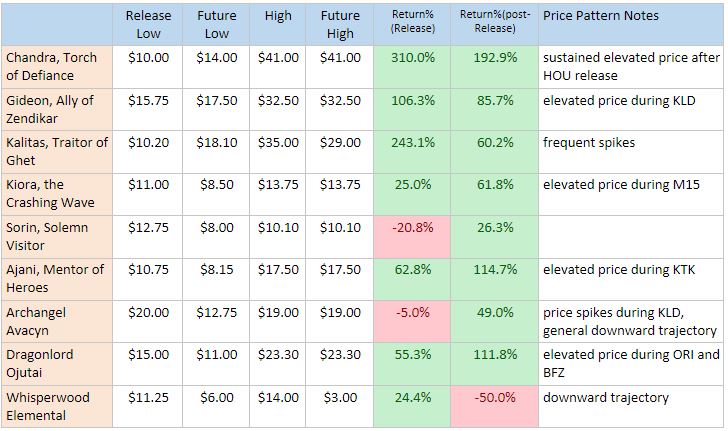
(4) State of the Portfolio
As one might expect, now is a time for selling, and for the past month I have been doing a decent amount of it. You can see a copy of my portfolio, along with the specific transaction done, here.
Now that my Kaladesh and Amonkhet season investments are both winding down, it is easier to predict how well I will have done. Assuming that Voice of Resurgence doesn't get back into the $10 to $15 range, my Kaladesh season performance will end up at about 90 percent, which is excellent and something I'm quite happy with. My Amonkhet season performance pales in comparison, and I expect it to end up at 35 percent when all is said and done.
I aim to always have a minimum of a 50-percent return per season, and the only way I think I'll reach there with Amonkhet is if Earthshaker Khenra continues to go up, and if Aven Mindcensor and Doomfall pick up steam. It finally looks like the market is no longer drowning in Hour of Devastation uncommons anymore, but the same cannot yet be said about Amonkhet uncommons. I believe that Treasure Chests have dramatically increased the supply of uncommons, and it will make uncommons less of a surefire investment moving forward.
(5) Signing Off
I look forward to reading your comments down below, and if you want to ask me any questions about the data I presented in this article, please do so, and I'll try to address it in my next article. Does anything jump out at you? Did anything surprise you?
This week I have a new god design to share that seems to be a fan favorite. Meet Dakthos!
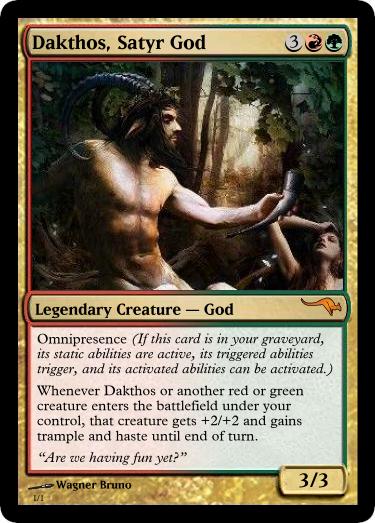


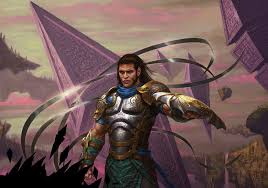







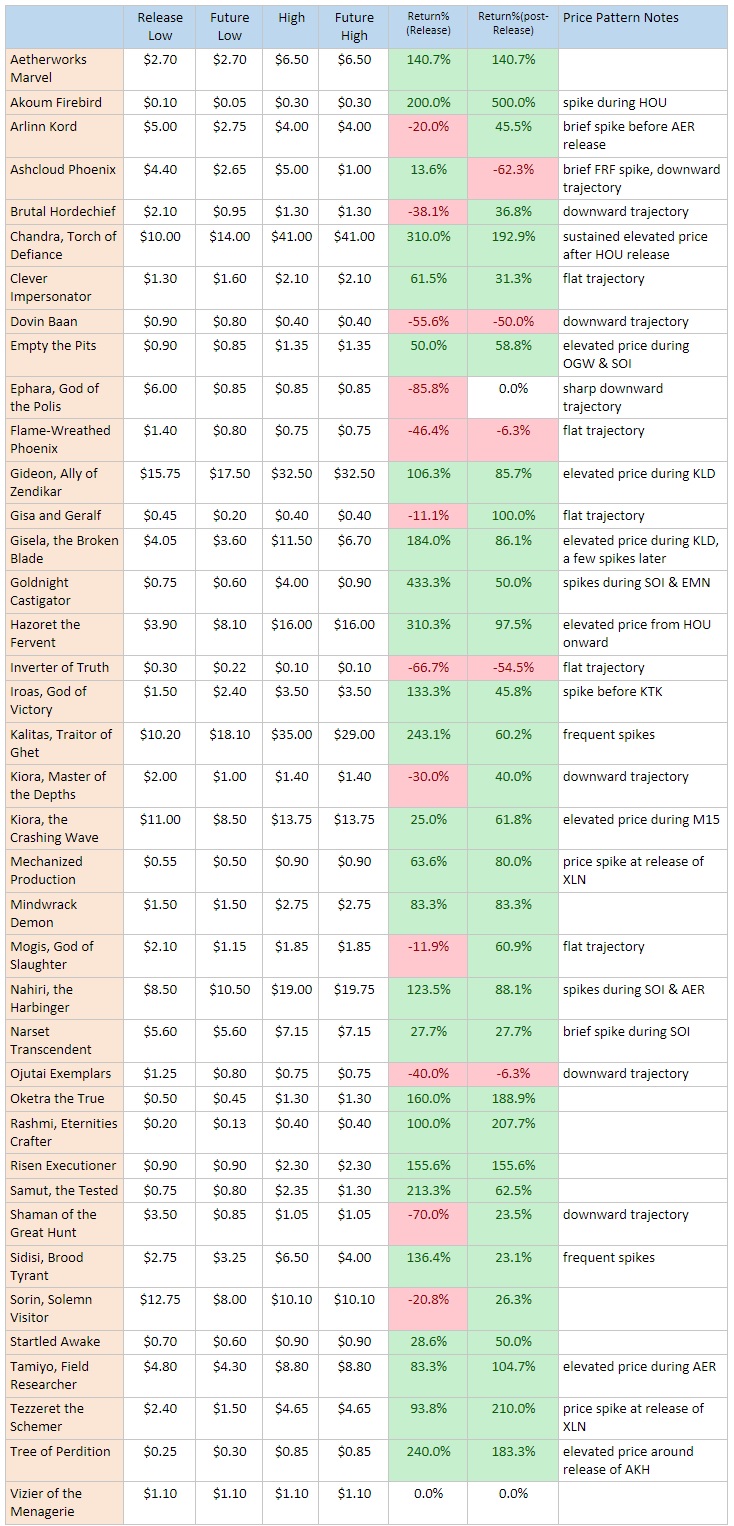
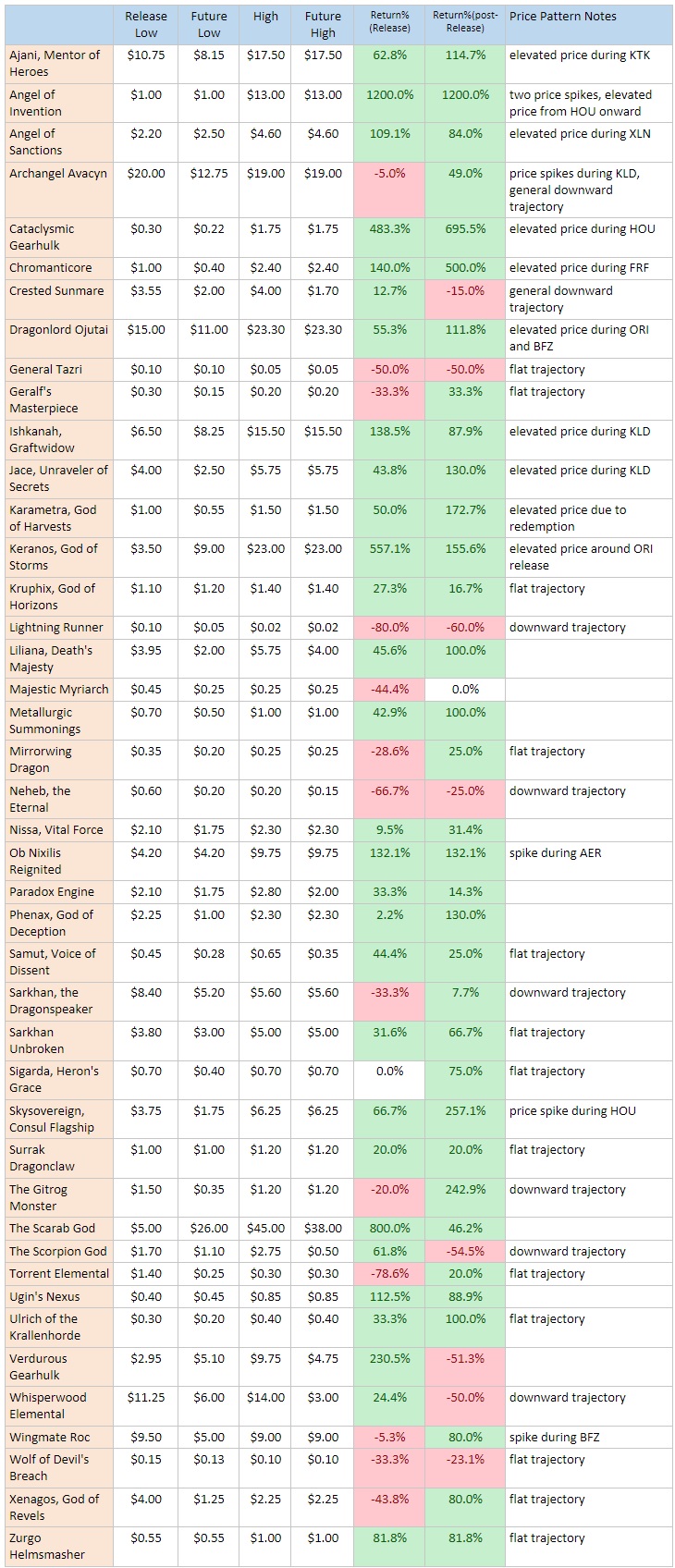

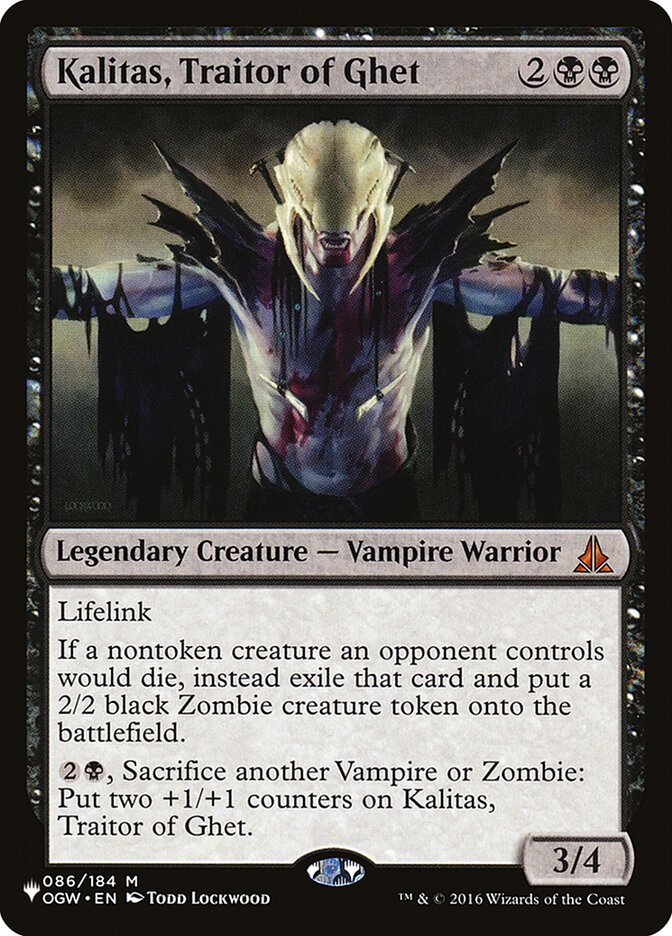




Hy Kyle, nice article. The links to the 4 and 5 mana cards doesn’t work for me though, so I can’t examine the complete data set.
I can get behind the idea that expensive mythic rares get more expensive, probably because they are good in Standard. I have my own ideas about this and I will try to write them up in my article this week.
I’ll try to get it fixed. Sorry about that!
Great! It’s working now.
It’s still not working for me, but as long as it’s working for other readers then that’s fine. In my next article I’ll just post the data sheet as one sheet instead of two so this problem doesn’t occur again.
I read your article for this week and what you say makes a lot of sense and will help me better grasp what is happening in the marketplace moving forward.